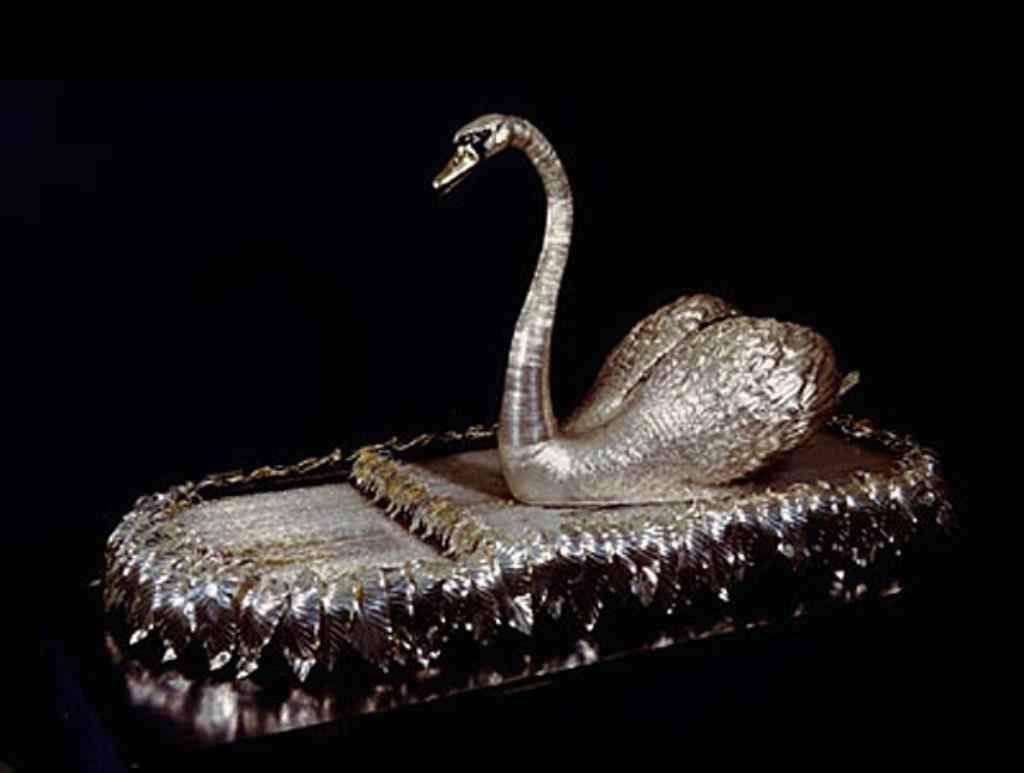
Mechanical Swan
This musical automaton is much loved and over the last century has become the icon of The Bowes Museum. The Silver Swan dates from 1773 and was first recorded in 1774 as a crowd puller in the Mechanical Museum of James Cox, a London showman and dealer. The internal mechanism is by John Joseph Merlin, a famous inventor of the time.
It was one of the many purchases that the Bowes’ made from Parisian jeweller M. Briquet, with John paying £200 for it in 1872. John and Joséphine first saw the swan at the 1867 Paris International Exhibition where jeweller Harry Emanuel exhibited it.
The American novelist Mark Twain also saw the Silver Swan at the Paris exhibition in 1867 and described it in his book The Innocents Abroad:
‘I watched the Silver Swan, which had a living grace about his movement and a living intelligence in his eyes - watched him swimming about as comfortably and unconcernedly as it he had been born in a morass instead of a jeweller’s shop - watched him seize a silver fish from under the water and hold up his head and go through the customary and elaborate motions of swallowing it...'
Joséphine, whose father was a clock-maker, seems to have had a fondness for automata. Whilst the Silver Swan is the best known, there are a number of others including mechanical toys, music boxes and watches with automaton movements at The Bowes Museum. Examples include an early 17th century lion clock made in Germany, whose eyes swivel, and a mechanical gold mouse, circa 1810, probably Swiss.
How The Silver Swan Works
The swan is life-size and is controlled by three separate clockwork mechanisms. The Silver Swan rests on a stream made of twisted glass rods interspersed with silver fish. When the mechanism is wound up, the glass rods rotate, the music begins, and the Swan twists its head to the left and right and appears to preen its back. It then appears to sight a fish in the water below and bends down to catch it, which it then swallows as the music stops and it resumes its upright position.
Usually you can see the Swan in action every afternoon at 2.00. This performance lasts approximately 40 seconds.
1772-1774
Silver, glass, metal
Images and text © Bowes Museum, 2017
Where you'll find this

The Bowes Museum
Permanent collection





